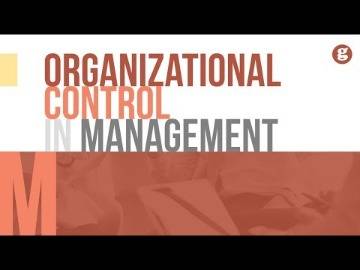Reconciling is the process of comparing the cash activity in your accounting records to the transactions in your bank statement. This process helps you monitor all of the cash inflows and outflows in your bank account. The reconciliation process also helps you identify fraud and other unauthorized cash transactions.

A bank reconciliation statement is a document that is created by the bank and must be used to record all changes between your bank account and your accounting records. It shows what transactions have cleared on your statement with the corresponding transaction listed in your journal. Bank reconciliation statements can help identify accounting errors, discrepancies and fraud.
How to Prepare a Bank Reconciliation
As a result of such direct payments made by the bank on your behalf, the balance as per the passbook would be less than the balance as per the cash book. When your business issues a cheque to its suppliers or creditors, such amounts are immediately recorded on the credit side of your cash book. When you compare the balance of your cash book with the balance showcased by your bank passbook, there is often a difference. As mentioned above, bank overdraft is a condition where a bank account becomes negative as a result of excess withdrawals over deposits.
- Make sure to choose the checking account you want to see and set the report period.
- This is because reconciling the cash book with the passbook at regular intervals ensures that your business’s cash records are correct.
- A bank reconciliation statement should be completed monthly but can even be done weekly if your company processes a large number of transactions.
- NetSuite Cash Management can automate a crucial part of this process — the manual comparison of bank data with companies’ accounting system data.
Next, check to see if all of the deposits listed in your records are present on your bank statement. The goal of bank account reconciliation is to ensure your records align with the bank’s records. This is accomplished by scanning the two sets of records and looking for discrepancies.
A business’s investments in marketing, R&D and technology all depend on it having the necessary level of cash. Bank reconciliation is one of the processes that tells a company, at any given point in time, whether it’s in a position to fund something new or should hold back. Instead of doing a bank reconciliation manually and risking oversight, you need expense management software to ensure efficiency and accuracy.
Step 2 of 3
Thank you for reading CFI’s guide to Bank Reconciliation Statement Template. For more resources, check out our business templates library to download numerous free Excel modeling, PowerPoint presentation, and Word document templates. If you’re doing a reconciliation every month, your starting balance will be the final balance from the previous month. We’re transparent about how we are able to bring quality content, competitive rates, and useful tools to you by explaining how we make money. Our experts have been helping you master your money for over four decades. We continually strive to provide consumers with the expert advice and tools needed to succeed throughout life’s financial journey.

These discrepancies have a variety of causes, from timing issues in the course of normal business operations, to errors and even fraud, and can vary in size from very small to the quite large. Bank reconciliation has to do with identifying and settling these discrepancies in order to get an accurate picture of the business’s available cash. It is an integral part of effective cash-flow management and internal controls.
What are some tips for a successful bank reconciliation?
The bank statement submitted by the businessman at the end of May will not contain an entry for the check, whereas the cash book will have the entry. As a result, a difference of $2,500 is caused between the two balances. Bank reconciliation statements safeguard against fraud in recording banking transactions. Tally’s auto bank reconciliation is designed to perform the bank reconciliation exactly in the same way you use to do it manually. To manually reconcile, you need to match the transaction amount and instrument number with the bank statement. TallyPrime, an business management software exactly mimics the way you used to manually reconcile but the only change is, it is automated for you.
Bank reconciliations are an important tool in cash-flow management and are usually handled by an accounting department or a business owner. The first is comparing the cash balances and transactions on the company’s books to the cash balances and transactions listed on an external bank statement. Because of things like electronic transfer fees, outstanding checks and deposits and different cut-off periods, the two rarely match. Bank reconciliation is an important financial control process that helps ensure your financial records are accurate, and there are zero unexplained inconsistencies in your day-to-day transactions. Bank administrators process bank service fees, interest, and other bank transactions that you might not be aware of or not know the exact amounts of.
Ideally, you should reconcile your bank account each time you receive a statement from your bank. This is often done at the end of every month, weekly and even at the end of each day by businesses that have a large number of transactions. Match the deposits in the business records with those in the bank statement. The deposit could have been received after the cutoff date for the monthly statement release. Depending on how you choose to receive notifications from your bank, you may receive email or text alerts for successful deposits into your account. Contact your bank to investigate further and find where the issue lies.
- If the bank has processed interest earned, it should reflect as an addition in your records.
- Companies can assign different people to handle different parts of a bank reconciliation and can complete reconciliations in a number of different ways.
- Due to the overwhelming paperwork that the financial department deals with, it’s possible that some invoices get misplaced or are never recorded.
- Such a time lag is responsible for the differences that arise in your cash book balance and your passbook balance.
- Reconciling bank balances monthly is an important internal control over cash.
In the case of items in transit, these arise from several circumstances. The firm’s account may contain a debit entry for a deposit that was not received by the bank prior to the statement date. One of the procedures for establishing the correct cash balance (and for controlling cash) is the reconciliation of the bank and book cash balances. It allows you to spot errors, detect frauds and reduces the risk of penalties and late fees due to incorrect entries.
The entries in the entity’s books to rectify the discovered discrepancies (except for the outstanding cheques) would typically be made in a subsequent date or period, not backdated. When cheques become stale (ie., out of date), they would typically be reversed, not cancelled. Or if a debtor has paid you via check and you’ve credited the account, but the receivable isn’t reflected yet in the bank statement. An expense or a sale may have been overlooked and not added to the ledger, causing a balance difference between the book and the bank statement. Prepare your financial records for a particular period by processing receivables and payables.
How We Make Money
Second, the check register reported a deposit of $5,220 with reference number 2299 that doesn’t appear in the bank statement. Expenses such as overdraft fees or monthly bank fees need to be deducted from your cash balance. If the bank has processed interest earned, it should reflect as an addition in your records. If you’re interested in automating the bank reconciliation process, be sure to check out some accounting software options. The easiest way to check for this is to print a check register for the month and compare it to the checks that have cleared the bank.
To reconcile your bank statement with your cash book, you need to ensure that the cash book is complete. Further, make sure that the bank’s statement for the current month has also been obtained from the bank. Once you complete the bank reconciliation statement at the end of the month, you need to print the bank reconciliation report and keep it in your monthly journal entries as a separate document. Journal entries, also known as the original book of entries, refer to the process of recording transactions as debits and credits. Such a time lag is responsible for the differences that arise in your cash book balance and your passbook balance. Whereas, credit balance as the cash book indicates bank overdraft or the excess amount withdrawn from your bank account over the amount deposited.
Therefore, the bank needs to add back the cheque’s amount to the bank balance. However, there may be a situation where the bank credits your business account only when the cheques are actually realised. Typically, the difference between the cash book and passbook balance arises due to the items that appear only in the passbook. Therefore, it makes sense to first record these items in the cash book to determine the adjusted balance of the cash book. The above case presents preparing a bank reconciliation statement starting with positive bank balances. In this case, the reconciliation includes the deposits, withdrawals, and other activities affecting a bank account for a specific period.
Direct Deposits into the Bank Account
The right steps and technologies can help companies increase the speed and efficiency of their bank reconciliation processes, regaining time for other activities. The accountant calculates that the bank account balance is going to end up at $119,800 once it includes the $13,000 of deposits in transit. At the same time, the cash balance of $120,000 on the company’s books will go down by the $200 in bank fees. She creates a bank reconciliation statement that itemizes both the $200 in unrecorded bank fees and the $13,000 in outstanding deposits.
So far, the checks in the bank statement are check numbers 100, 101, 103, and 105. At an initial glance, you should notice that check numbers 102 and 104 are missing in the sequence. Moreover, we should also trace if Paul’s Plumbing issued checks beyond check number 105.
Bank Reconciliation is the process of comparing your business’ books of accounts with your bank statements. It is done periodically to check whether the bank-related transactions are recorded properly in your books of accounts. Bank reconciliation is the process of comparing the balance as per the cash book with the balance as per the passbook (bank statement). The very purpose of reconciling outsourced accounting and bookkeeping the bank statement with your business’ books of accounts is to identify any differences between the balance of the two accounts. The cash account balance in an entity’s financial records may also require adjusting in some specific circumstances, if you find discrepancies with the bank statement. In these cases, journal entries record any adjustment to the book’s balance.
It is up to you, the customer, to reconcile the cash book with the bank statement and report any errors to the bank. Compare your personal transaction records to your most recent bank statement. First, make sure that all of the deposits listed on your bank statement are recorded in your personal record.
Our goal is to give you the best advice to help you make smart personal finance decisions. We follow strict guidelines to ensure that our editorial content is not influenced by advertisers. Our editorial team receives no direct compensation from advertisers, and our content is thoroughly fact-checked to ensure accuracy.
